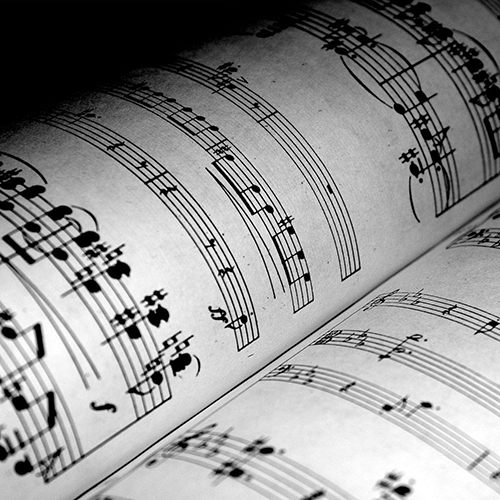Like my First Concerto for Alto-Saxophone the second one , “Passage of Time”, is a reworking of an original work for alto-saxophone and organ, in which the organ score is transcribed for orchestra. The original work in this case was my “Passage du Temps” (2016), commissioned by my Edmonton colleagues, saxophonist Dr. William Street and organist, Dr. Marnie Giesbrecht, and was premiered by them, January 22, 2017 at the University of Alberta.
The central unifying 4-note motif for the three-movement work was derived from a tribute to their names, i.e. the first and last letter of their last names (G, S, T, T), transcribed into English, German and French letter names as g –E-flat – B – b. This motif, especially the interval of the falling or rising major third/diminished fourth or expanded as an augmented chord, is heard directly or in an oblique way in all three movements. In the first movement, Passacaglia and Fugue, the four-note motif is expanded into a twelve-tone theme, though treated in a tonal-chromatic fashion. In the second movement the four note- (or augmented chord-) motif is treated in a more lyrical fashion; in the last, it appears as a more figurative theme with cluster chords.
The title Passage of Time/Passage du Temps is not so much a reference to music as a time art, but a homage to some of the great compositional devices and styles since 1700 to which I feel indebted: From the contrapuntal techniques by Bach in I, the quasi-ostinati accompanying a cantilene by Vivaldi and Bach (II, main theme), the French Romantic organ genre pieces (II, middle section) to the more “edgy” neo-Classic style of the early 20th century, especially Bartok and Stravinsky.
The orchestration posed some challenges in terms of timbre, texture and especially the tonal range of instruments. An organ reed stop, e.g. has a range covering the whole organ keyboard, whereas the range of the individual wind instrument is limited, which necessitated some dividing between instruments or adjustments. At the end of the second movement the original saxophone part and organ reed-part had to be reversed in the orchestral version to allow for the tonal compass of the English Horn.
I wish to express my sincere thanks to Trent Worthington for transcribing the manuscript intodigital format.


